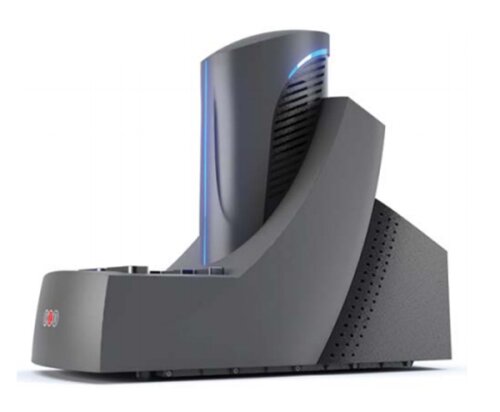The Biomolecular Interaction Platform (BIP) at the University of Antwerp consists of several complementary state-of-the-art methodologies for the verification and in-depth characterization of molecular interactions. The combination of orthogonal methodologies allows to determine fundamentally different aspects of interactions at different throughput scales, with binding partners ranging from small molecules (< 200 Da) over protein complexes to subcellular entities. The different technologies can also be used for competition experiments and epitope mapping.
The BIP is open to collaborations with partners from both Academia and Industry, for conducting molecular interaction analyses in the context of fee-for-service projects or scientific collaboration-centered agreements.
What do we offer?
- Molecular interaction methodologies:
- Isothermal Titration calorimetry
- Grating-coupled interferometry
- Interaction analysis based on Mesoscale Discovery methodology
- Protein Thermal Shift
- Expertise in experimental design
- Experience in data analysis
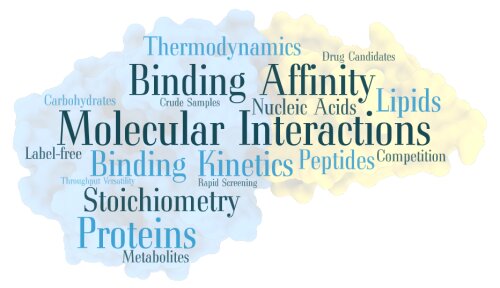
How do we operate?
Before the measurements take place, sample requirements and experimental design are discussed with our partner in order to determine the optimal experimental strategy. Depending on the project agreements, sample preparation can be performed in the partner lab and/or in our lab. The operation of the BIP equipment can only be performed by our dedicated staff, due to the delicate nature of the procedures. Results are analyzed in close contact with the partner, in relation to the research questions.
Modalities
Our service is subject to a half-day rate, which depends on the nature of the collaboration (Academia or Industry, co-authorship, consumable usage, used methodologies, ….).
For enquiries or questions, please contact the daily BIP coordinator dr. Pieter Van Wielendaele, Prof. dr. Ingrid De Meester or Prof. dr. ir. Yann Sterckx.
Available methodology
Our platform combines several complementary and orthogonal methodologies, allowing the analysis of diverse binding characteristics at different throughput-scales. This combination allows flexibility in experimental strategy, matching diverse research questions.
The core of the platform consists of Isothermal Titration Calorimetry and Grating-Coupled Interferometry for the detailed characterization of interactions. These methodologies are complemented with Protein Thermal Shift (aka Thermofluor) and Meso Scale Diagnostics interaction analysis for more basic screening of interactions.
Isothermal Titration Calorimetry (Peaq-ITC, Malvern Pananalytical)
Isothermal Titration Calorimetry allows the thermodynamic characterization of binding events based on measurement of heat exchange. Besides the affinity (KD), also the stoichiometry (N) and thermodynamic parameters reflecting binding mode (enthropy ΔS and enthalpy ΔH) are determined. ITC measurements are performed in solution, do not require labels and are non-destructive.
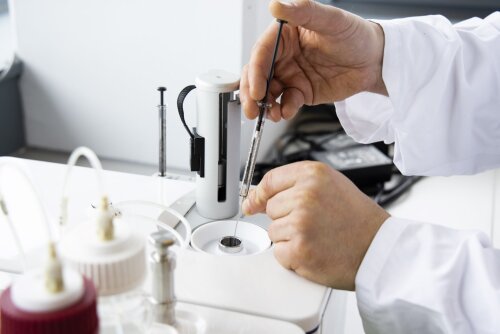
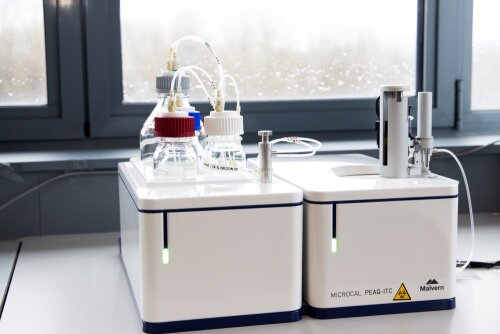
Grating-Coupled Interferometry (Creoptix WAVEdelta - Malvern Panalytical)
Grating-Coupled Interferometry (GCI) uses SPR-like methodology (e.g. equivalent to Biacore technology) for quantifying affinity (KD) and kinetic binding aspects (kon and koff). GCI requires immobilization of one binding partner on the Creoptix biosensor chips, which can be achieved through covalent or non-covalent methods.
Due to the high sensitivity and robustness, GCI is compatible with a wide MW range (from small molecules < 200 Da to large macromolecular complexes and subcellular entities) and crude matrices, such as serum. The WAVEdelta can also be operated in screening mode, for selection of binding hits from sample libraries.
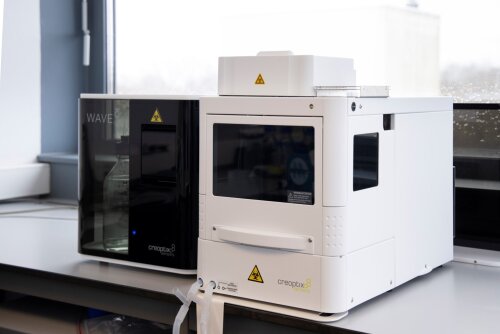
Protein Thermal Shift (CFX Connect, Bio-Rad)
Protein Thermal Shift relies on fluorescence-based detection of protein denaturation. This is performed by adding a specific fluorescent dye to the protein sample followed by thermal denaturation. The dye will generate a fluorescent signal when it interacts with hydrophobic groups that become exposed during protein denaturation.
Since binding with an interaction partner can often increase protein stability, stabilizing interactions can be detected by checking for shifts in protein melting temperatures. Due to its 96-well format, this methodology is suitable for basic screening of sample libraries for interaction with protein targets and can also be employed for rapid screening of buffer conditions that enhance protein stability.
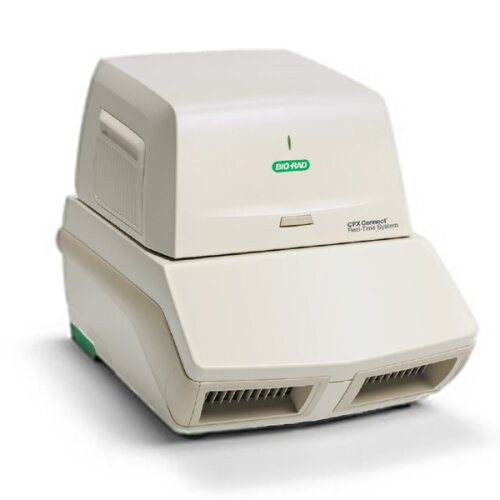
Interaction analysis using Mesoscale Discovery technology (Meso QuickPlex SQ 120, Meso Scale Diagnostics; co-partner with UA Molecular pathology lab)
The Mesoscale Discovery technology relies on electro-chemiluminescence for detection of interactions, by using dedicated electrode-containing 96-well plates and electro-chemiluminescent labels. An electrical pulse from the well electrode will induce electro-chemiluminescence from the labels near the electrode. By coupling one interaction partner to the well and labeling the other partner, interactions between both can be detected and quantified.
Major advantages of this technology are the ability to multiplex, ultra-sensitive detection, low sample usage and compatibility with crude matrices.
